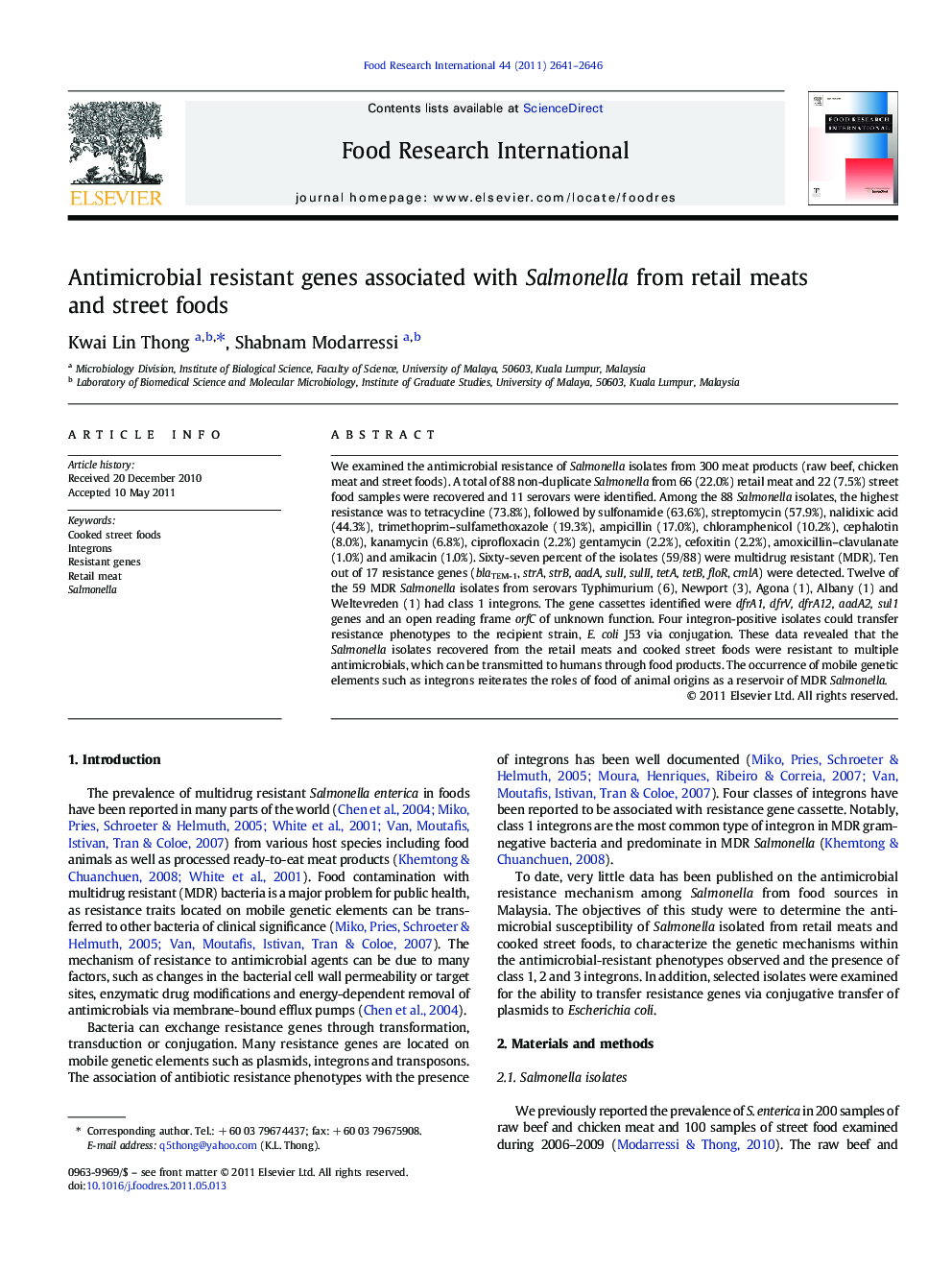| کد مقاله | کد نشریه | سال انتشار | مقاله انگلیسی | نسخه تمام متن |
|---|---|---|---|---|
| 4562083 | 1330702 | 2011 | 6 صفحه PDF | دانلود رایگان |

We examined the antimicrobial resistance of Salmonella isolates from 300 meat products (raw beef, chicken meat and street foods). A total of 88 non-duplicate Salmonella from 66 (22.0%) retail meat and 22 (7.5%) street food samples were recovered and 11 serovars were identified. Among the 88 Salmonella isolates, the highest resistance was to tetracycline (73.8%), followed by sulfonamide (63.6%), streptomycin (57.9%), nalidixic acid (44.3%), trimethoprim–sulfamethoxazole (19.3%), ampicillin (17.0%), chloramphenicol (10.2%), cephalotin (8.0%), kanamycin (6.8%), ciprofloxacin (2.2%) gentamycin (2.2%), cefoxitin (2.2%), amoxicillin–clavulanate (1.0%) and amikacin (1.0%). Sixty-seven percent of the isolates (59/88) were multidrug resistant (MDR). Ten out of 17 resistance genes (blaTEM-1, strA, strB, aadA, sulI, sulII, tetA, tetB, floR, cmlA) were detected. Twelve of the 59 MDR Salmonella isolates from serovars Typhimurium (6), Newport (3), Agona (1), Albany (1) and Weltevreden (1) had class 1 integrons. The gene cassettes identified were dfrA1, dfrV, dfrA12, aadA2, sul1 genes and an open reading frame orfC of unknown function. Four integron-positive isolates could transfer resistance phenotypes to the recipient strain, E. coli J53 via conjugation. These data revealed that the Salmonella isolates recovered from the retail meats and cooked street foods were resistant to multiple antimicrobials, which can be transmitted to humans through food products. The occurrence of mobile genetic elements such as integrons reiterates the roles of food of animal origins as a reservoir of MDR Salmonella.
Research highlights
► 67% Salmonella isolates (59/88 ) isolated from retail meat and street food were multidrug resistant (MDR) and 12 of these class 1 integrons with gene cassettes dfrA1, dfrV, dfrA12, aadA2, sul1 genes and an open reading frame orfC of unknown function.
► Four integron-positive isolates could transfer resistance phenotypes and genes to the recipient strain, E. coli J 53 via conjugation.
► The occurrence of mobile genetic elements such as integrons reiterates the roles of food of animal origins as a reservoir of MDR Salmonella.
Journal: Food Research International - Volume 44, Issue 9, November 2011, Pages 2641–2646